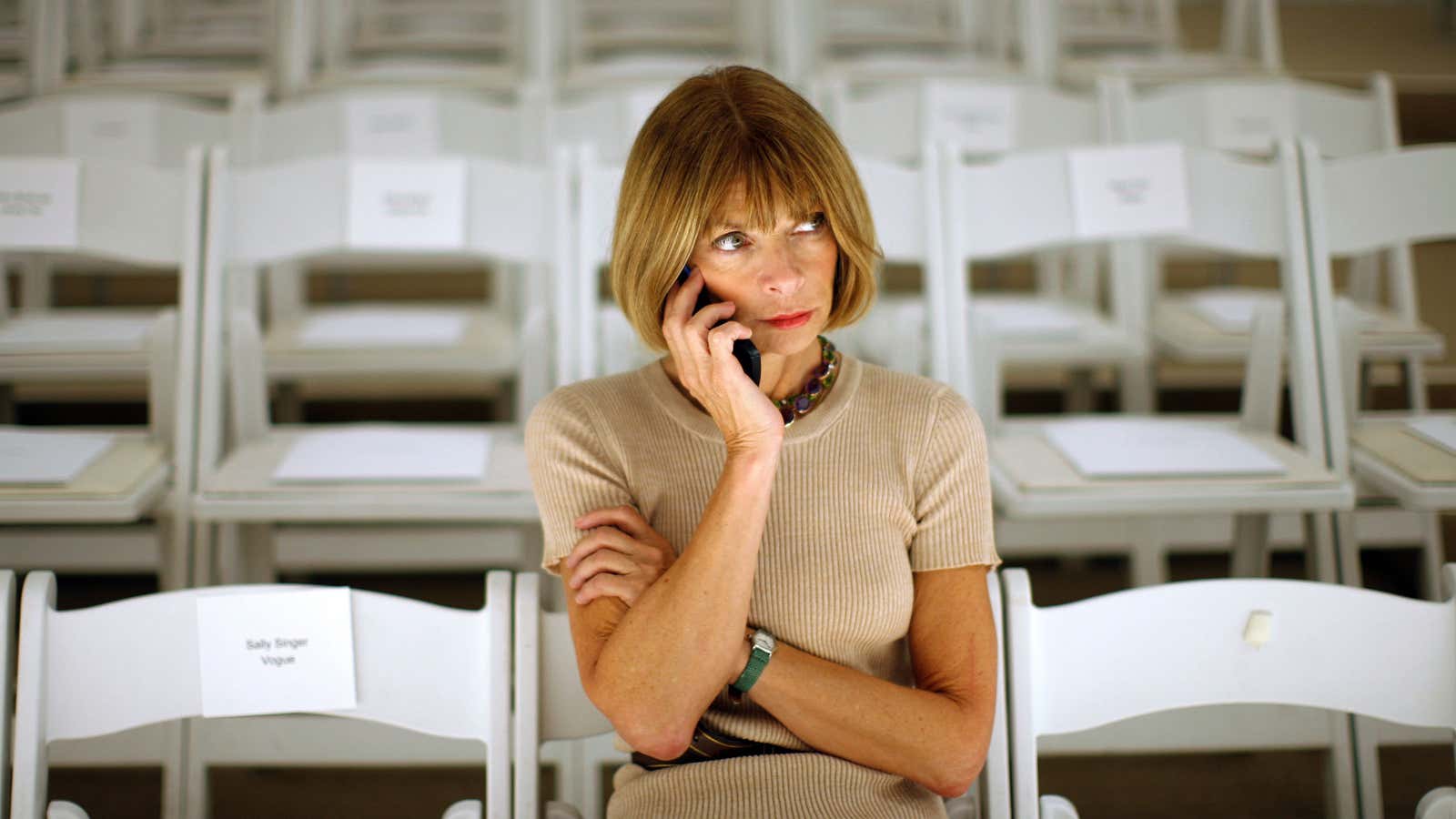The first Monday in May is more than just a harbinger of spring. It’s a date deeply etched in the calendar of New York society—and those of fashion-lovers worldwide: the Met gala. At the Met gala—one of the world’s most spectacular red carpets for fashion–luminaries from the worlds of technology, politics, Hollywood, sports, media, and music convene. From Bezos to Beyoncé, the Gala is essentially a Vogue-sanctioned theme party.
The evening commemorates the opening of the museum’s spring fashion exhibition at the Costume Institute, but it also celebrates the power of its host: Vogue’s editor-in-chief and Condé Nast artistic director, Anna Wintour. (In 2014, Michelle Obama cut the ribbon on the Met’s new Anna Wintour Costume Center, after a two-year renovation.)
The annual exhibition often reflects the forces shaping fashion today—technology and China were both recent themes—and gives Wintour the opportunity to flex her muscle, partnering with the world’s most powerful people and institutions. In years past, those have included behemoths like Apple, Amazon, Yahoo, and a host of “anonymous Chinese donors.”
This year, Wintour has outdone even herself. As Marc Bain wrote in November, the 2018 “theme will be a deep look at the intersection of fashion and Catholicism, with support from an even higher spiritual authority, the Vatican”:
The seat of power of the Catholic Church is loaning out about 50 “ecclesiastical masterworks,” including papal robes and accessories such as tiaras and rings, stretching across 15 papacies and dating back to the 18th century. They’ll form the “cornerstone of the exhibition,” the museum said today (Nov. 8) in announcing “Heavenly Bodies: Fashion and the Catholic Imagination.” Many of those items have never been seen outside the Vatican.
The Guardian reports that the exhibition—which spans 25 galleries between the museum’s Fifth Avenue flagship and the Cloisters, a reconstruction of a medieval monastery overlooking the Hudson River in upper Manhattan—is the biggest ever mounted at the Met.
In partnering with what remains, perhaps, the world’s most powerful ecclesiastical body—The Vatican—Wintour is making her mark on history. Which is why this blockbuster exhibition will do nothing to quell the rumors swirling regarding Wintour’s possible departure from Vogue at the summer’s end. And indeed, it would make a nice bookend to her first cover for Vogue, which featured Israeli model Michaela Bercu in a Christian Lacroix jacket emblazoned with a gemstone cross. (“All very ‘Like a Prayer,’ Wintour said of the cover in 2012.)
With this year’s exhibition, Wintour has gone beyond equating fashion with art, and has elevated it to the level of religion. And what could make a sweeter swan song than that?
